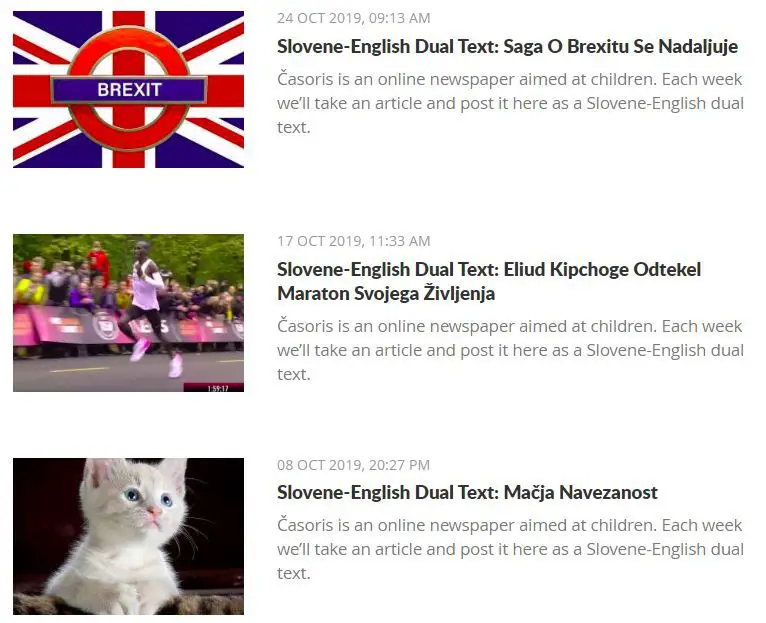Made in Slovenia
STA, 23 November 2019 - Slovenia observes Rudolf Maister Day on Saturday, remembering the general who established the first Slovenian army in modern history and secured what later became Slovenia's northern border. The holiday commemorates the day in 1918 when Maister (1874-1934) took control of Maribor.
Several events commemorating Maister were held this week. The main ceremony, on the eve of the holiday in Murska Sobota, was addressed by parliamentary Speaker Dejan Židan.
Židan praised Maister's courage, patriotism and determination also in his address to MPs yesterday. He said that Rudolf Maister Day was a great opportunity "for us to ask ourselves how do we contribute to a better society on a daily basis and whether we are worthy of the great deeds of our ancestors".
He added that Maister and his fighters could serve as an inspiration particularly to "us, current decision-makers" to be "bold enough to join forces in our efforts for a better future".
Interior Minister Boštjan Poklukar noted in his message marking the holiday that Maister had not hesitated for a minute before taking his army into battle for "our northern border".
After laying a wreath at the monument to Maister in front of the Defence Ministry building on Friday, Defence Minister Karl Erjavec said Maister, a superb army commander, had felt at the end of the First World War that a historic moment is coming.
"It was a time, when we were able to take advantage of the first opportunity to get to independent Slovenia. It was a dream of many generations, many have given their lives for this goal. This is why is consider General Maister's actions as the first step towards our country," he stressed.
Today, President Borut Pahor will welcome visitors at the Presidential Palace, and the honorary guard of the Slovenian Armed Forces will be lined up in front of the building.
In Maribor and Kamnik, where Maister was born, memorial plaques will be unveiled, honouring the ardent Slovenian patriot.
Following the break-up of the Austro-Hungarian empire, Major Maister prevented Maribor and the Podravje area from being made part of German Austria, the country created after WWI comprising areas of the former empire with a predominantly German-speaking population.
On 30 October 1918, the German city council declared Maribor and its surroundings part of German Austria, which Maister found unacceptable.
He set up a Slovenian army of 4,000 soldiers, disarmed the German Schutzwehr security service, and disbanded the militia of the German city council.
The general then occupied Slovenian ethnic territory, establishing the northern border between Austria and Yugoslavia that was later ratified by the Saint Germain Peace Treaty. The same border still runs between Slovenia and Austria today.
Maister is buried at Maribor's Pobrežje Cemetery, where he has a modest grave.
23 November has been observed as a public holiday since 2005, although not as a bank holiday.
All our stories on Slovenian history are here
STA, 14 November 2019 - The likeness of Angela Piskernik, the first Slovenian woman with a PhD in natural sciences, who paved the way for women in a field dominated by men, can be now found on thematic postage stamps, part of a commemorative series launched by Pošta Slovenije to honour Slovenian women scientists.
Piskernik (1886-1967), a Carinthian Slovenian, pioneer environmentalist, political activist and resistance fighter, held a PhD in botany from the University of Vienna. After World War II, she became the head of the Ljubljana Museum of Natural History and served in this position until her retirement.
She is most famous for her academic work Key for the Identification of Flowering Plants and Ferns, a reference book in which she identified 2,222 species and whose two editions, in 1941 and 1951, were very popular among botanists.
During World War II, she was imprisoned in the Ravensbrück concentration camp, where she compiled a book of recipes shared by fellow internees, which makes for a unique document today.
She was also a campaigner for the rights of Carinthian Slovenians and the first professional nature conservationist in Slovenia, having advocated setting up conservation areas, including the Triglav National Park, which she saw coming to life six years before her death.
After retiring, she cooperated with the national institute for cultural heritage protection and published numerous academic papers on nature conservationism at home and abroad.
On her 80th birthday, she was decorated at home with the Gold Star Order of Merit for her lifetime achievements.
At the end of her life, she was working on botanic entries for the Dictionary of the Standard Slovenian Language as well as drawing up a plan for the Slovenian section of the joint Yugoslav-Austrian transnational nature park in the Kamnik-Savinja Alps and Karavanke mountain range.
Today, awards named after her are given out by the Commission for Mountain Nature Conservation at the Slovenian Alpine Association to deserved individuals for lifetime achievement in protection and conservation of the Alpine flora.
Her portrait can be now found on the first national postal operator's commemorative stamp honouring Slovenian women scientists. The special series was launched last week, with bacterial epidemiologist Amalija Šimec's stamp being next in line in 2020.
Two law students from the University of Ljubljana, Katja Grünfeld and Iva Ramuš Cvetkovič, beat more than 100 teams from around the world in the Manfred Lachs Moot Court competition in Washington, DC. In this they put their knowledge of space law and international public law. into practice in order to win a lawsuit on behalf of a hypothetical state for the unlawful appropriation of a lunar base.
The teams put their cases before judges from the International Court of Justice in the championship, which was held between 21 and 25 October as part of the 70th International Astronautical Congress. The team from Slovenia – which consisted of Katja Grünfeld and Iva Ramuš Cvetkovič, Rok Kljajič as coach, and Vasilka Sancin as mentor – had already won the European heats, beating a team from the University of Vienna in the final.
The Manfred Lachs Space Law Moot Court is a competition in space law and international public law organised by the International Institute of Space Law and the European Centre for Space Law. The finals in Washington were in the form of simulated proceedings before the International Court of Justice in the Hague, and with both a written part and a live hearing.
Each team prepared two written memorandums, one for the plaintiff and one for the defendant. In these they presented legal arguments and facts supporting the individual claims addressed to the International Court of Justice in connection with a hypothetical case.
The second-placed team, winners of the African heat, was from the International Law Students Association (ILSA) of the University of Calabar, Nigeria, which included Ebruka Nelly-Helen Neji and Ushie Augustine Eneji.
Regular readers of TSN will probably know we run a weekly dual text, in English and Slovene, to encourage you to read more of the language. This text comes from Časoris, a Slovenian news website for children. Since the website won an award last week, as detailed below, we thought it’d be a good time to share more about the project, and so sent some questions to one of the people behind it, Sonja Merljak Zdovc, and she was kind enough to reply.
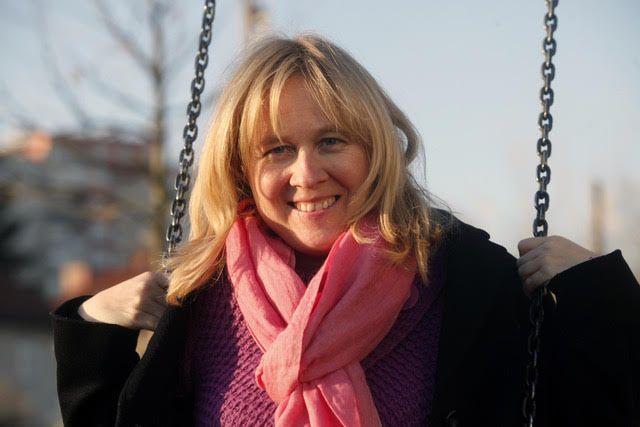
Source and subject, Sonja Merljak Zdovc
How did you come to start Časoris?
It was created in April of 2015 – in the aftermath of January’s terrorist attack on Charlie Hebdo in Paris. At the time, many parents were wondering how to explain what happened to their children. An article about how a French newspaper for children did just that landed in my Facebook feed, and it reminded me that we have no such medium for children and their parents in Slovenia. That’s how it occurred to me that I could create it.
I strongly believe that children can and want to understand the news if it is put in context for them, and presented in kid-friendly language. With Časoris I am trying to help them to understand the news, to think critically about what they’re reading, and to apply their knowledge to the real world.
More personally, I love being a journalist. I believe this is the most beautiful profession in the world. At the time when I became one, we would say that we became journalists because we wanted to bring peace to the world. Just like the women in Miss World!.
However, in the last decade journalism became a failing profession. And the media, so crucial to democracy, began to lose readers, listeners, and viewers. Children growing up today live in the world of Snapchat, Instagram and You Tube, and do not see their parents read newspapers or watch the news as we did.
With a generation of readers already lost, I began to think if I could do anything to help save the profession I love so much. I came up with an idea: an online newspaper for children.
Online, because children are on the web, and a newspaper because I wanted them to read serious news, not just the fun staff.
Časoris is aimed at young children, those who won’t read the news on their own. But they are trusting souls and if the adults they respect, their teachers and parents, tell them it is good to read the newspaper, they will listen.
This way we hope that when they become teenagers they will develop a habit of reading reliable sources of information. And when a popular You Tuber suggest that a EU directive will ban memes, they will know where to double check their facts.
Who produces it, and who is it aimed at?
It is produced mostly by me together with a team of dedicated writers who contribute as much and as often they can. It is aimed at children aged 6 to 12 but we hear and are happy because of that that also older children read it and find it interesting.
Our readers like Časoris because it has short, interesting stories using relatively simple Slovene. Do you know if it’s used to teach Slovene as a foreign language?
I don’t know about that, but I have heard that some English language teachers use Časoris in their English classes. And I also know that some teachers from the States find it useful as it brings them the news from other part of the world. They value its different perspective on current affairs.
And of course, it’s read in some Slovene schools during classes.
Časoris recently won an award in Austria – what was that all about?
The project Stories of Children from around the World won the Intercultural Achievement Award in the media category. The aim of the project is to give a voice to the voiceless, in our case to children from other countries living in Slovenia and going to Slovenian schools.
The award means a lot, because our work has been recognized internationally. For a small media operation, which Časoris still is, this is really huge.
The award is financial, too, so it will be easier to start next year. Časoris does not have any systematic funding and we can never be sure if we’ll have enough support.
We respond to tenders and if we are successful we get funding for a project. Stories of Children from around the World, for example, was co-financed by Government Communication Office as part of the efforts to respect and welcome members of different ethnic groups, refugees and migrants.
You used to work at Delo. What have been the biggest changes in the Slovenian print media over your career?
Hm, that’s a difficult question. In Slovenia we could add political pressures to the digital revolution. In the past we had seen examples of politicians wanting to control the media. One of the biggest drops in subscriptions was directly related to that. The readers that left did not subscribe to other newspapers, they were lost for good.
The idea that the media must bring in a double digit revenue was also not helping. A media owner should have other interests at heart, not profit. A wise media owner’s interest is the public good through credible journalism. An example of such an owner is the The Guardian’s Scott Trust.
Finally, the internet caused a disruption that we are all still struggling with. Nobody has come up with a good business model for the digital online world, at least not a model that could be used widely. There may be some exceptions, but in general the majority of the media all around the world are under pressure.
I’m still waiting for a Netflix or Deezer for news, a solution that will allow me to pay a certain amount of euros per month and then access the stories I want to read across different media and platforms – behind a paywall or not. If there’s no paywall I still want to make a donation, but I do not want the hassle of making a donation or paying every time I want to read something. I believe that there are other people out there who feel the same, so I hope someday will have a technology that will enable this.
Are there any reasons to be optimistic about the future of the media in Slovenia?
I am not sure that the future of the media in Slovenia is very different to the future of the media in other countries, but for the peculiarity of our language, of course.
I definitely believe that as citizens we need quality media and good journalism, and I only hope that more of us will recognize the important role the media plays in democracy. If we want to keep the media, we need to be willing to spend the price of a cup of coffee a day on the media of our choice – online or offline, as a subscription or a donation.
It seems easy to say, oh, I do not need the media, I get my information on Google and Facebook. But how do you know which information you are getting and why if you don’t have something to compare it to?
When something happens and the media doesn’t report it, people say, oh where were the journalists, why did they not report it? What they don’t seem to understand is that journalists are professionals who need to pay the bills, just like doctors, teachers or lawyers. They cannot do their job for free. Somebody has to pay for their service. It is either us, the readers, or advertisers, foundations or the state through various subsidies.
We can say that everybody whose paying an electricity bill is already paying for the news on public broadcasters. But if only the public broadcasters remain, it means we have only one perspective. And sometimes that’s not enough. Then there is no media pluralism.
In the States, half of the journalism jobs were cut in the last 10 to 20 years. It’s no wonder so much stuff is left unreported.
You can learn more about Časoris on the site itself, and see our collection of dual texts here. Meanwhile, if there's a project in Slovenia that you think deserves some attention in the English-language media, please contact me at This email address is being protected from spambots. You need JavaScript enabled to view it., or find me on Facebook
STA, 29 October 2019 - A project presenting stories of refugee and migrant children in Slovenia carried out by the Časoris on-line magazine for children has been awarded this year's Intercultural Achievement Award (IAA) in the media category, conferred by the Austrian government.
Representatives of Zavod Časoris, the publisher of the magazine, received the award from the Austrian Federal Ministry for Europe, Integration and Foreign Affairs at a ceremony in Vienna on Monday.
The award supporting intercultural projects related to education, youth, women, media, migration and integration went to the magazine for its project Stories of Children of the World among more than 200 competing projects from 31 countries.
Announcing the news, the publisher said that it was the first project from Slovenia to receive the award.
As part of the project, the on-line magazine has presented since 2017 a total of 17 stories of children from various countries; their customs, culture and tradition.
This year, seven of these children were revisited to see how they have integrated in the new environment in Slovenia and what helps them the most in the integration.
The creator of the project, journalist and editor Sonja Merljak Zdovc, said on the occasion that the project wanted to give a voice to those who were otherwise not heard.
"These are children who came to Slovenia from other countries - unaccompanied, as refugees or migrants, who were fleeing from war or poverty, and dreaming about a better, safer and more decent life," she added.
You can see examples of stories from Časoris, in both Slovene and English, here
STA, 4 October 2019 - Slovenian and Swedish researchers have developed a new concept for aluminium batteries, doubling their energy density and at the same time reducing the cost to the environment by using readily available and less damaging materials than those used at the moment.
Aluminium batteries have a number of advantages over the currently used lithium-ion batteries, among them high capacity of the aluminium metal anode, as well as tried and tested production and recycling methods.
The newly developed concept could lead to a significant reduction in battery prices and lower the battery's impact on the environment, the Chemical Institute announced the news in a press release
Lower production cost and impact on the environment "make our system incredibly interesting for energy saving in large-scale photovoltaic or wind turbine plants," according to Patrik Johansson of the Chalmers University of Technology in Gothenburg, Sweden.
Johansson and Robert Dominko of the Ljubljana Chemical Institute led two research teams that developed the new concept presented in late September in an article in the Energy Storage Materials journal.
Explaining the revolutionary concept, the article says that previous designs for aluminium batteries have used the aluminium anodes and graphite cathodes.
However, graphite provides too low an energy content to create battery cells with enough performance for everyday use. Now, graphite has been replaced by an organic, nanostructured cathode, made of the carbon-based molecule anthraquinone.
The anthraquinone cathode has been developed by one of article co-authors, Jan Bitenc of the Ljubljana Institute of Chemistry, while he was guest researcher at Chalmers.
According to Niklas Lindal, another co-author, the team is now working on eliminating chlorine from the electrolyte.
The researchers believe that although aluminium storage technology is a long way from commercial production, the new device will be able to compete or complement lithium-ion storage.
"So far, aluminium batteries are only half as energy dense as lithium-ion batteries but our long-term goal is to achieve the same energy density."
More details on this research can be found here
STA, 25 September 2019 - The Chamber of Commerce and Industry (GZS) has conferred awards for breakthrough innovations as it honoured the most innovative businesses at the 17th Innovation Day on Wednesday.
Pharma company Lek won two top awards, for a new procedure for the purification of biopharmaceuticals and a new generation of probiotics, while its rival, Krka, was honoured for an innovative generic drug.
Caravan maker Adria Mobil received the award for a new generation of campers, Domel for new high-powered electric engines and ETI Elektroelement for a new generation of plastic parts for fuses.
Mediainteractive, a sole proprietorship, received the honours for a collaborative educational environment for emergency medical personnel and two companies, while Titus Dekani and Lama Avtomatizacija received a joint award innovations in machinery construction.
GZS president Boštjan Gorjup said innovativeness required a foundation in national culture and stressed that Slovenians were highly regarded abroad for their expertise. But he also stressed that "more courage, strong will and desire for collaboration" was needed.
President Borut Pahor said in his keynote that innovation was the key to improving productivity and increasing value added. "Successful companies understand this."
Fresh from his appearance earlier this year as part of the Modern Gallery’s Time Without Innocence. Recent Painting in Slovenia (Čas brez nedolžnosti. Novejše slikarstvo v Sloveniji), Arjan Pregl now has two openings were you can see more his work, in Celje and Ljubjana.
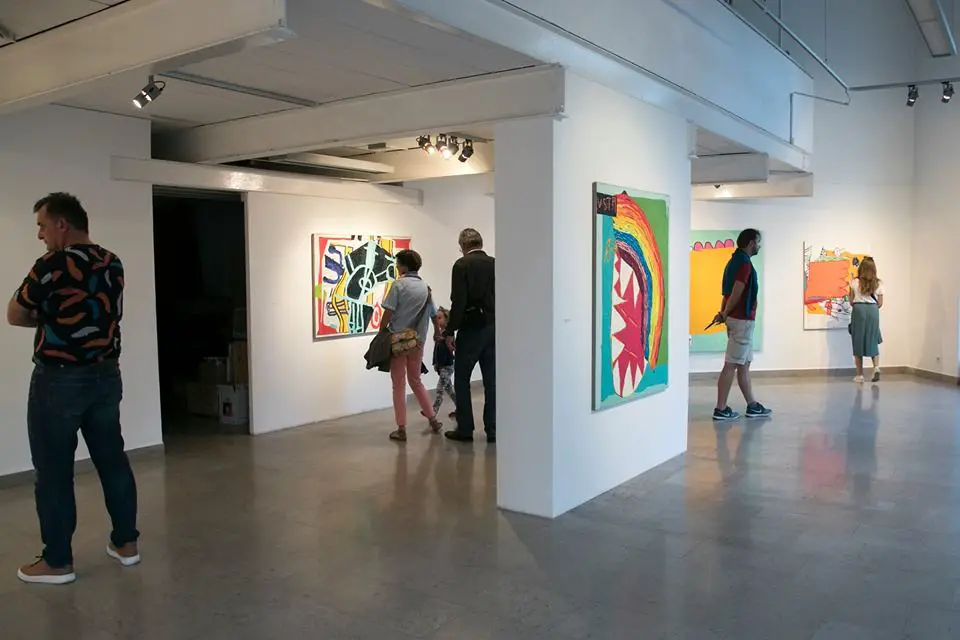
Photo: Tomaž Črnej
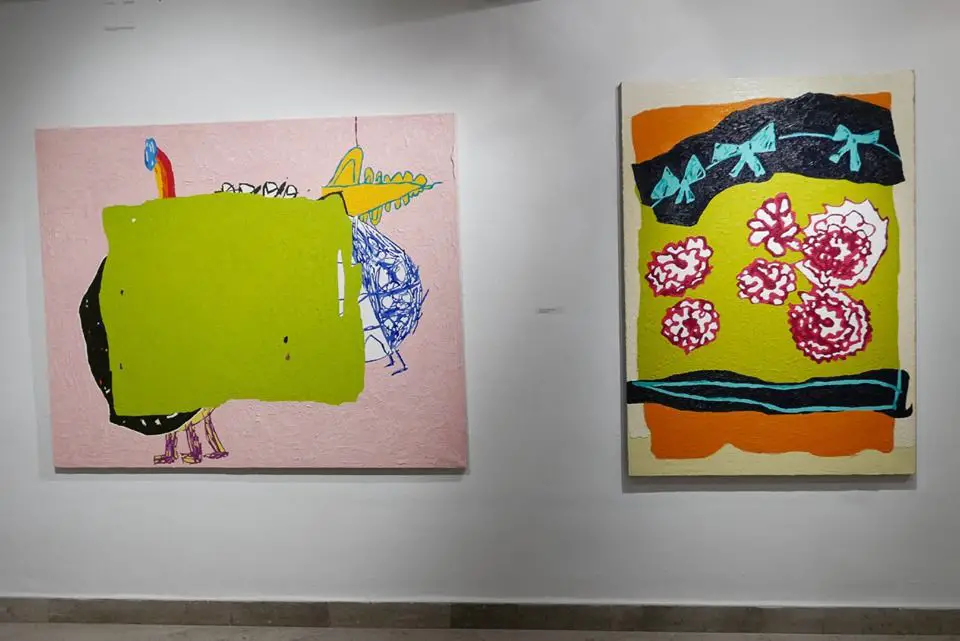
Photo: Arjan Pregl
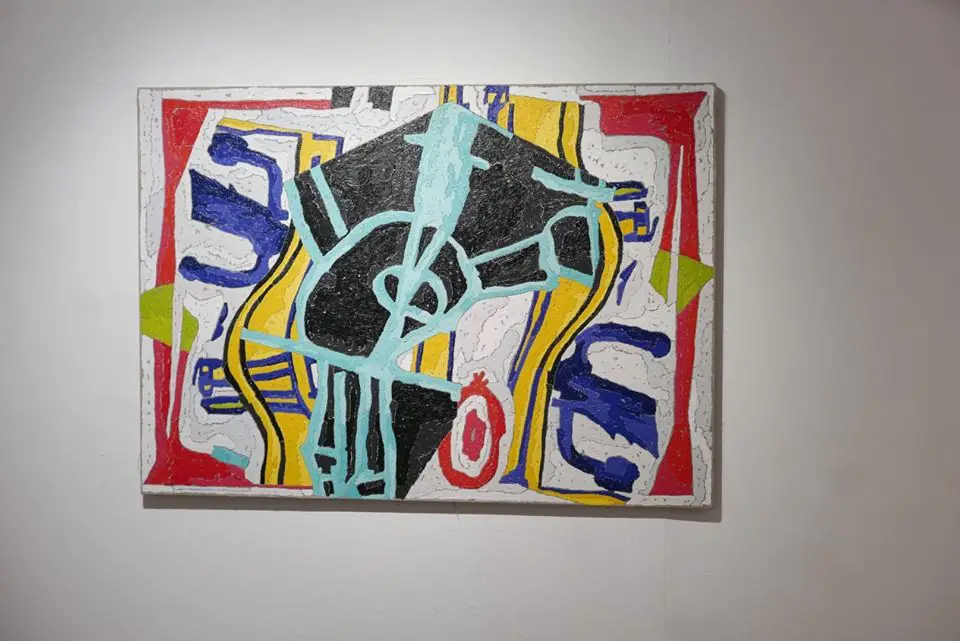
Photo: Vasja Nagy
The Celje show, called GUGU GAGA, is on at the Likovni salon Gallery (Center Sodobnih Umetnosti Celje) and started on 20 September, running 20 October, and is where the pictures that accompany this story come from. More details can be found here.
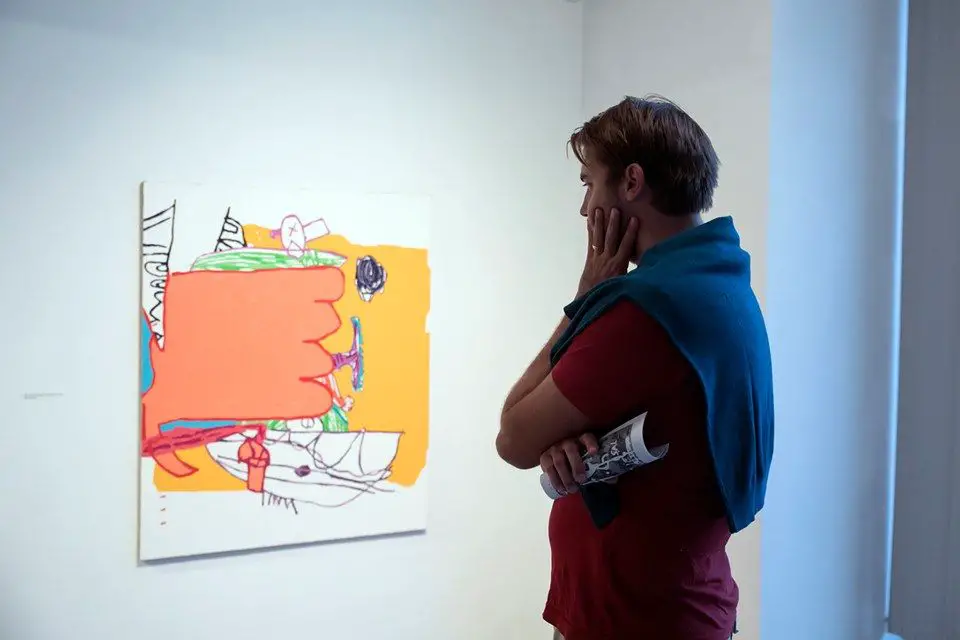
Photo: Tomaž Črnej
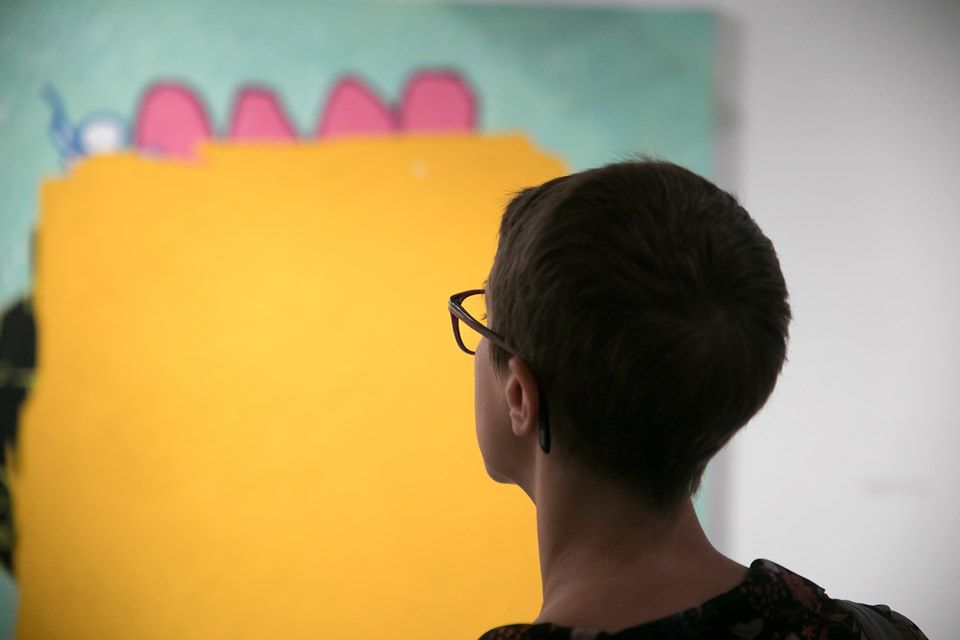
Photo: Tomaž Črnej
Meanwhile, the Ljubljana show opens this Friday, 27 September and runs for about a month, at the Galerije Y (Gallery Y - pronounced “epsilon”, not “y”) at the far end of Trubarjeva cesta, #79, more or less opposite Tovarna Rog. Here, Pregl’s work will be shown alongside three of the gallery’s other artists, Tina Dobrajc, Duša Jesih, and Šašo Vrabič. The gallery is part of the SLOART project, which sells works by modern and contemporary Slovenian artists (learn more about that here).
STA, 18 September 2019 - Tomaž Gorkič, the director of Slovenia's first feature-length horror film, the 2015 slasher Idyll, has returned to the genre that brought him acclaim. His latest film, which he describes as a "politically incorrect mix of horror and black comedy" will be on show at Kino Šiška tonight before it premieres in cinemas on Thursday.
Prekletstvo Valburge (Curse of the Valburga) has the brothers Bojan and Marjan hoping to make some easy money from hordes of tourists in their hometown by organising a tour of an abandoned local castle that is closed to the public.
They spice up the adventure with a local legend, oblivious to the existence of a powerful and much darker legend lurking in the abandoned building.
While Gorkič's latest venture is firmly rooted in the genre, it "does not neglect the present," the producers say.
"It boldly enters Slovenia's past and present where demons, Nazis, vampires, partisans, criminals, parvenus, sexists, snobs, cannibals, hicks, alcoholics, grubbers, junkies, obsessives and other members of society lurk."
It’s a trailer for a slasher movie, so NSFW
The all-star cast includes acclaimed theatre actors Jurij Drevenšek and Marko Mandič, game show host and actor Jonas Žnidaršič, as well as the mother-and-daughter pairing of Tanja Ribič and Zala Djurić Ribić, Swedish black metal musician Niklas Kvarforth and frontman of Slovenian rock band Big Foot Mama, Grega Skočir.
Like Idyll, Curse of the Valburga is an independent production spearheaded by Gorkič, a self-taught film maker, but unlike Idyll, which won the main prize in 2019, it will not be screened at the ongoing Festival of Slovenian Film.
Gorkič withdrew the film from the festival after the programme commission decided - without explanation - not to enter it in the competition programme.
STA, 13 September 2019 - Six astronauts from five space agencies are training in Slovenia these days for space missions as part of the CAVES programme by the European Space Agency (ESA). Training in caves presents the astronauts with environments and situations very similar to spaceflight, to help them transfer the learning from their caving expedition to space.
Astronauts are exploring underground systems, delve deep underground to perform scientific experiments as well as chart and document their activities.
According to ESA, the training of the astronauts, who come from ESA, Russia's Roscomos, Canadian and Japanese space agencies, and NASA (two astronauts), started on Wednesday.
On 20 September, they will start their six-day stay at Lepa Jama, a cave in the Kočevje area in the south, where they will explore underground water flows.
The cave leads into a labyrinth of passages, which astronauts will have to explore on their own, as their communication with the team on the surface will be very restricted.
The ESA official who conceived the programme, Loredana Bessone, believes such a simulation is the closest possible environment that can be found on Earth to the "environmental, psychological and logistic restraints of a space mission".
Apart from training for their work in space, astronauts will also do some actual cave research, as the development of caves, underground water flows and underground life still contain many riddles for scientists, said Franci Gabrovšek from the Karst Research Institute of the Research Centre of the Academy of Sciences and Arts (ZRC SAZU).
The astronauts will conduct research and mainly track the air and water flows so as to learn how to find water. They will also be on lookout for any unknown species that may have adapted themselves to the extreme conditions in the cave, and micro plastics, which have become a risk for the environment.
STA, 9 September 2019 - History of Love (Zgodovina Ljubezni), a drama by Sonja Prosenc, will be Slovenia's candidate for the nomination for the 2020 Academy Award for Best International Feature Film, as selected by a jury of the Association of Slovenian Filmmakers.
The Slovenian/Italian/Norwegian co-production, made in 2018, has been picked for being an "unconventional and recognisable film, characterised by top performances by all team members, harmonised in a unified story."
With the film, Prosenc is making a strong return after her debut feature The Tree (2014), having already received a special mention for direction while premiering at the prestigious Karlovy Vary International Film Festival.
Competing for the five nominee spots for the foreign language Oscar, History of Love is a story about Iva, a 17-year-old who is in the process of coming to terms with the death of her mother.
"Influenced by this deep personal loss and by the discovery that she didn't know everything about her mom, the girl slowly immerses herself into an odd, hallucinatory world far from reality, which acts as a catharsis for all her painful feelings," says the website of the Kinodvor cinema.
The selection jury said that the film "paints the internal experience of the protagonist in a unique and elaborate film language, as she is facing her mother's mysterious past and trying to make sense of the newly-developed relationships".
According to the jury, the film speaks with silence, not words, while not underestimating the viewer, but providing room for their own reflection. "Time, thought and nature take a new dimension in this film, as they constantly open up fields of the associative, symbolic and intuitive."
The film, which was also written by Prosenc, received the Vesna Awards for photography and a special original achievement at last year's Festival of Slovenian Film, as well as a number of other awards in the home country.


